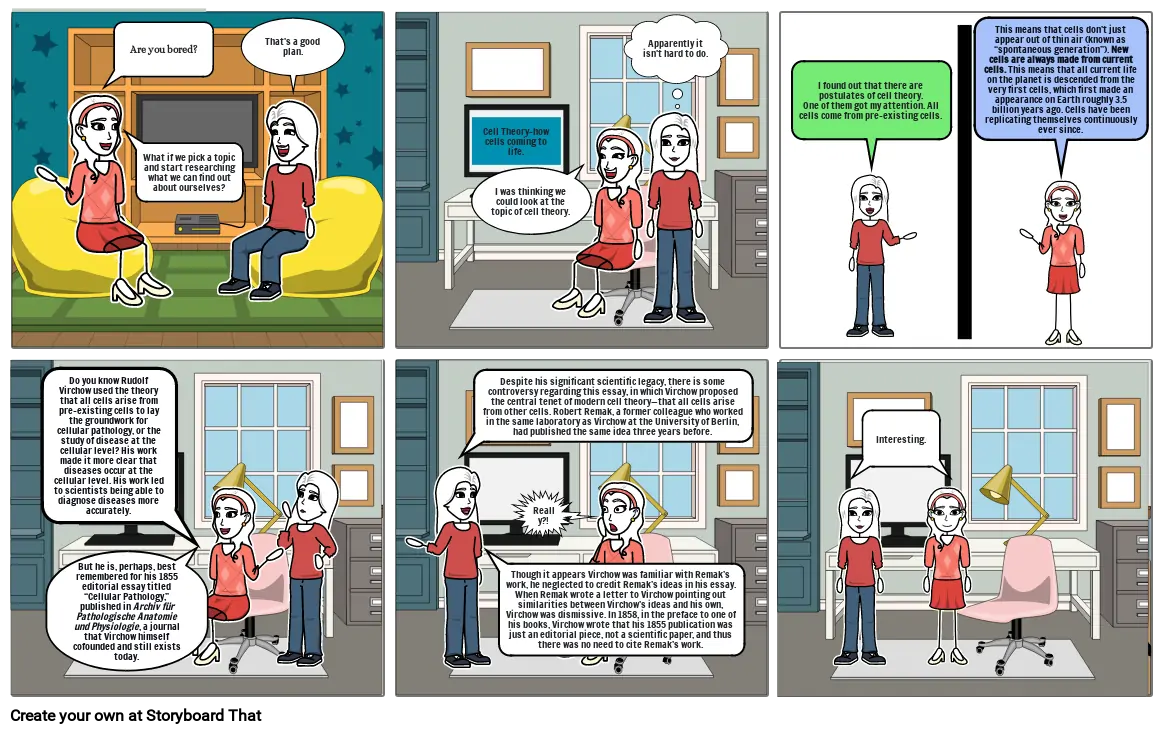Unknown Story

Storyboard Text
- Are you bored?
- What if we pick a topic and start researching what we can find out about ourselves?
- That's a good plan.
- I was thinking we could look at the topic of cell theory.
- Cell Theory-how cells coming to life.
- Apparently it isn't hard to do.
- I found out that there are postulates of cell theory.One of them got my attention. All cells come from pre-existing cells.
- This means that cells don’t just appear out of thin air (known as “spontaneous generation”). New cells are always made from current cells. This means that all current life on the planet is descended from the very first cells, which first made an appearance on Earth roughly 3.5 billion years ago. Cells have been replicating themselves continuously ever since.
- Do you know Rudolf Virchow used the theory that all cells arise from pre-existing cells to lay the groundwork for cellular pathology, or the study of disease at the cellular level? His work made it more clear that diseases occur at the cellular level. His work led to scientists being able to diagnose diseases more accurately.
- But he is, perhaps, best remembered for his 1855 editorial essay titled “Cellular Pathology,” published in Archiv für Pathologische Anatomie und Physiologie, a journal that Virchow himself cofounded and still exists today.
- Despite his significant scientific legacy, there is some controversy regarding this essay, in which Virchow proposed the central tenet of modern cell theory—that all cells arise from other cells. Robert Remak, a former colleague who worked in the same laboratory as Virchow at the University of Berlin, had published the same idea three years before.
- Though it appears Virchow was familiar with Remak’s work, he neglected to credit Remak’s ideas in his essay. When Remak wrote a letter to Virchow pointing out similarities between Virchow’s ideas and his own, Virchow was dismissive. In 1858, in the preface to one of his books, Virchow wrote that his 1855 publication was just an editorial piece, not a scientific paper, and thus there was no need to cite Remak’s work.
- Really?!
- Interesting.
Over 30 Million Storyboards Created

